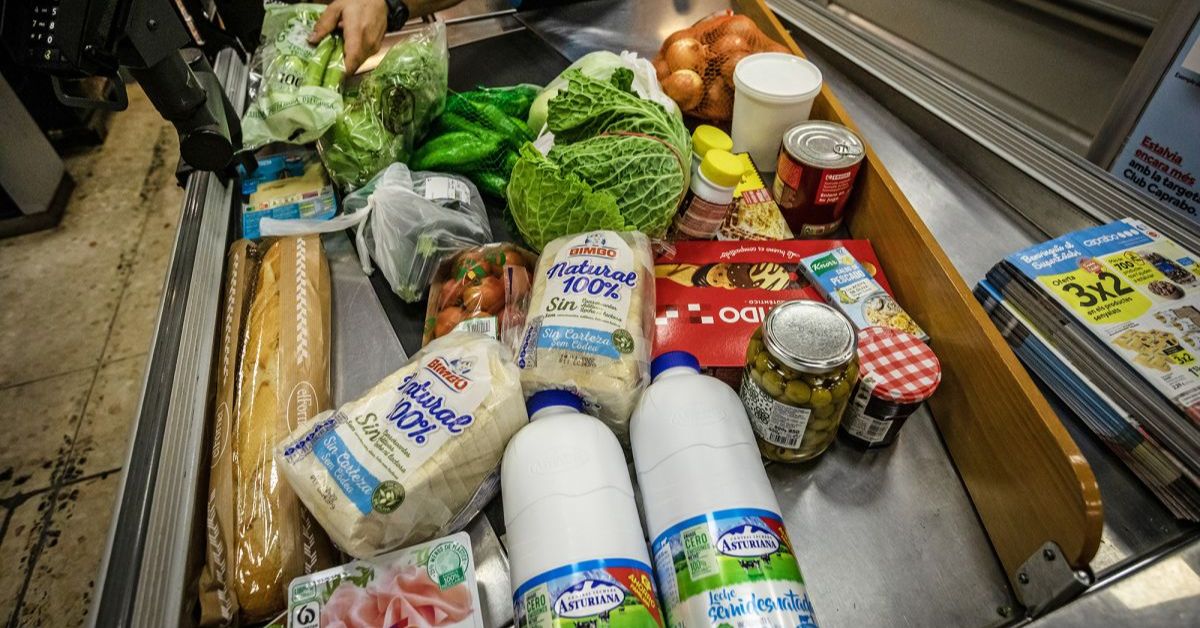People in Europe and North America are having to deal with the harsh effects of fast inflation for the first time in decades. This has caused grocery bills to go up, wages not to go as far, and savings to lose value. Some people had to choose between putting food on the table and keeping their homes warm.
There are signs that things are getting better in these major developed economies. Prices are still going up, but at a slower rate because of how quickly interest rates are going up. Fears of a global recession are causing energy prices to go down, and the price of sending a container across the ocean has dropped dramatically. These things are making inflation less likely to happen.
In November, consumer prices in the United States went up by 7.1% on an annual basis. This was the smallest increase since December 2021. Prices in the UK went up by 10.7% last month, which is less than the 11.1% increase in October, according to data released on Wednesday.
But even if this round of inflation has reached its peak, economists say the world may never go back to simpler times when prices barely went up at all. The goal of central banks from the US Federal Reserve to the European Central Bank and the Bank of England is to keep inflation close to 2%, but it won’t be easy to do so.
Prices could go up for years to come because of things like aging populations, the climate crisis, the switch to green energy, and a move away from global supply chains and toward more local production. That might mean that the government has to keep interest rates high. Mark Zandi, the chief economist of Moody’s Analytics, said, “In the ten years after the financial crisis, they worked hard to make inflation go up.” “In the next 10 years, they will work hard to bring inflation down.”
The Problem With Inflation
Inflation is expected to drop from 9.4% in 2022 to 6.5% next year and 5.1% in 2024 in the 38 countries that are part of the Organization for Economic Cooperation and Development. These countries have most of the world’s largest economies. Part of the reason for the drop is that the effects of the pandemic are fading and oil prices are going down, but most of it is due to a campaign by central banks to bring inflation back down.
In the past few months, they have been raising the cost of borrowing money quickly to slow down demand. This has sent a chill through the economy. There is still a lot of uncertainty. Central banks don’t know exactly how high they need to raise interest rates and how long they need to keep them there to get inflation close to 2%. But they do think that their hard work will pay off in the long run.
In October, Loretta Mester, president of the Cleveland Federal Reserve, said that it would take a few years for inflation to reach the Fed’s goal of 2%. “But I do think we’ll make some real progress in the next year.”
But the last percentage point or so of too much inflation might be especially hard to get rid of. As inflation goes down and the rising number of unemployed people shows how high rates hurt the economy, people will ask central banks to ease up. If unemployment is very high, 3% inflation might start to look less bad.
Olivier Blanchard, a former chief economist at the International Monetary Fund, recently wrote in a column for the Financial Times that he thinks there will be a heated debate when inflation goes back down to 3% in 2023 2024 about whether it is worth getting it down to 2% if it means a further significant slowdown in activity.

Aging, Climate, And Deglobalization
One thing is to fight inflation in the short term. But there are also larger trends that are changing politics, society, and the economy that could keep prices high. These include changes in the population, efforts to replace fossil fuels with clean energy, and the process of deglobalization.
“The inflation rate could reach 2%, but will it stay there?” The founder of Talking Head Macroeconomics, Manoj Pradhan, said this. “All of these risks are structural problems that, in my opinion, make it likely that inflation will stay higher than it used to be.”
The United Nations says that almost one out of every five people in North America and Europe is now 65 or older. By 2050, that number could reach one in every four people. Pradhan, who has written about this topic, says that this means spending will have to go up on things like health care and pensions.
At the same time, the number of people working is expected to go down in many developed economies, which is something that is already happening as a result of the pandemic. Countries like the United States and the United Kingdom have fewer people working because people are retiring early or are sick for a long time. All of this will cause more debt and drive up prices.
Randall Kroszner, who was a governor of the Federal Reserve from 2006 to 2009, said, “You won’t be getting as many people into the job market as you used to.” “That is one of the hardest things I’ve ever had to do.” Also important to think about are the effects of global warming and the need to get the world off of oil, gas, and coal. This year, ECB policymaker Isabel Schnabel gave a speech in which she talked about three risks.
The first, which she called “climateflation,” is the real cost of climate change, which causes food production and housing to be disrupted by extreme weather and more powerful and more frequent natural disasters. The second is “fossilization,” which is the “legacy” cost of relying on fossil fuels. This means that events like Russia’s war in Ukraine can cause energy prices to go up quickly.
A New Target?
Then comes a hard question: If 2% inflation will be harder to reach, does it make sense for central banks to keep it as a goal, which would encourage them to keep interest rates high?
This is not something that central banks want to talk about right now. It would have been one thing to raise the target when inflation wasn’t a problem, but to do so now could send the message that central banks aren’t in charge. This is risky because their credibility is a big part of keeping inflation expectations in check.
Former Bank of England official Michael Saunders said, “It would make it harder to get inflation back under control, and it would hurt economic growth because there would be more uncertainty about inflation in the long run.” “I want to stress that it would be a terrible idea,” she said.
But Blanchard, who has been pushing for a higher target for a long time, thinks that advanced economies should think about setting an inflation goal of 3%. This would take some of the pressure off central bankers. Some worry raising the target could make workers keep asking for pay raises, but research shows that people only pay attention when inflation goes above the 3% to 4% range, he said.
Kroszner, a former Fed governor, says that changing the target in the current situation would be “problematic,” but that central banks should always be thinking about it. “The 2% goal that central banks in most countries have chosen is made up,” he said.
I hope you like our article. If so, please tell us what you think in the comments. You can also add Journalistpr.com. to your bookmarks to get more updates like these.

Leave a Reply